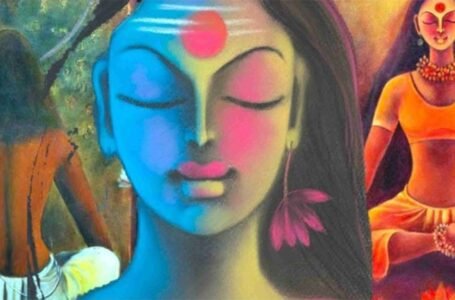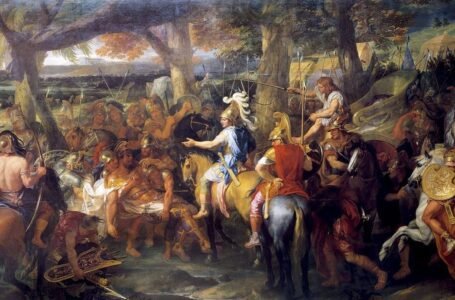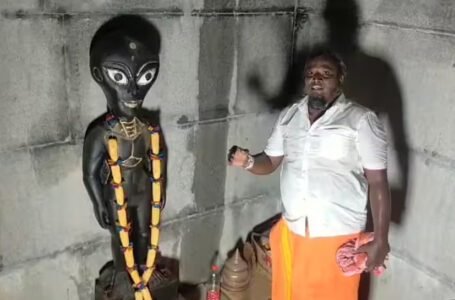Jhumar Dance: A Folk Treasure of Eastern India

Jhumar, also known as Jhumair, is an age-old Indian folk dance form deeply rooted in the cultural heritage of states like Jharkhand, Odisha, Chhattisgarh, Assam, Bihar, and West Bengal. This dance is an embodiment of the spirit of celebration, unity, and connection with nature. Originating among the Indo-Aryan ethnic groups of Chotanagpur, particularly the Sadan community, Jhumar holds a significant place In the socio-cultural fabric of these regions. The dance is a reflection of rural life, celebrating the simplicity, beauty, and resilience of agrarian communities. Traditionally performed during the harvest season, Jhumar is a tribute to the joys of a bountiful harvest, the harmony of rural life, and the eternal bond between humans and nature.
Origins and Cultural Significance
Jhumar’s roots lie in the heartland of India’s tribal and rural communities, particularly in the Chotanagpur plateau. This plateau, rich in its tribal heritage and natural beauty, provides the ideal setting for a dance that celebrates love, nature, and agricultural abundance. The name “Jhumar” is believed to be derived from the rhythmic swaying movements that characterize the dance, akin to the gentle swaying of crops in the breeze.
This dance form is particularly significant among the Sadan community, an Indo-Aryan ethnic group of Chotanagpur. Over centuries, Jhumar has evolved as a medium of storytelling, celebrating nature’s bounty and marking significant occasions in the lives of rural communities. It is not merely a dance but a form of communal expression, bringing people together to rejoice in the fruits of their labor and the beauty of their environment.
Performance and Style
Jhumar is typically performed in groups, with dancers standing in a row or forming a circle while holding hands. The dance is characterized by its graceful and rhythmic movements, where performers sway their bodies, clap their hands, and occasionally execute timed jumps to accentuate the beat. This synchronization of movements creates an atmosphere of joy and unity, making Jhumar a visual and auditory delight.
The dance Is usually accompanied by singing couplets that narrate tales of love, nature, and everyday life. These songs, often passed down through generations, serve as an oral record of the community’s history and values. The performers’ attire is vibrant, reflecting the rich cultural aesthetics of the region. Women often wear traditional sarees with tribal jewelry, while men adorn dhotis and kurtas, adding to the authenticity of the performance.
Musical Accompaniment
The soul of Jhumar lies in its music, which is created using traditional instruments like the Mandar, Dhol, Nagara, and Bansuri (flute). The Mandar, a double-headed drum, produces a deep and resonant sound that sets the rhythm for the dance. The Dhol, with its powerful beats, adds energy and vigor to the performance. The Nagara, a kettle drum, provides a pulsating bass, while the Bansuri’s melodious tunes infuse the performance with an ethereal quality.
The Interplay of these instruments creates a symphony that resonates with the spirit of the land and its people. The music, combined with the rhythmic movements of the dancers, transforms the performance into an immersive experience that captivates both participants and spectators.
Regional Variations of Jhumar
Jhumar is not a monolithic dance form; it has multiple regional variations, each reflecting the unique cultural identity of the area it originates from. These variations highlight the diversity and adaptability of the dance, making it a rich and multifaceted tradition.
- Khortha Jhumar
Khortha Jhumar is associated with the Khortha-speaking communities of Jharkhand. This version of Jhumar incorporates local folk songs and stories, often revolving around themes of love, devotion, and rural life. The movements are subtle and graceful, emphasizing the elegance of the dance.
- Kurmali Jhumar
Kurmali Jhumar, performed by the Kurmi community, is more energetic and vibrant. It is often performed during agricultural festivals and celebrations, symbolizing the community’s gratitude to nature for its blessings.
- Panch Pargania Jhumar
This variation comes from the Panch Pargania region of Jharkhand. It is known for its intricate footwork and synchronized movements, showcasing the dancers’ skill and coordination.
- Nagpuri Jhumar
Nagpuri Jhumar is the most prominent and widely recognized variation of Jhumar. Performed by the Nagpuri-speaking communities, this version is deeply rooted in the traditions of the Chotanagpur plateau. It Is often performed during social gatherings, festivals, and weddings.
- Mardani Jhumar
Mardani Jhumar, as the name suggests, is performed exclusively by men. This variation is more vigorous and martial in nature, with movements symbolizing strength and bravery. It is often performed to celebrate victories or significant achievements.
- Janani Jhumar
In contrast to Mardani Jhumar, Janani Jhumar is performed by women and is characterized by its graceful and delicate movements. It often revolves around themes of love, motherhood, and nature, highlighting the feminine aspects of rural life.
Decline and Challenges
Despite its cultural significance, Jhumar is facing a gradual decline in modern times. Several factors contribute to this, including urbanization, migration, and the lack of proper documentation and promotion. As younger generations move to cities in search of better opportunities, they often lose touch with their cultural roots. The traditional knowledge of Jhumar, which is passed down orally, is at risk of being lost as fewer people remain in rural areas to learn and practice it.
Additionally, the commercialization of folk arts has led to the dilution of Jhumar’s authenticity. Performances are often modified to suit urban audiences, stripping the dance of its traditional essence. The lack of institutional support and funding further exacerbates the situation, making it difficult for practitioners to sustain their art.
Preservation Efforts
To preserve and promote Jhumar, several initiatives have been undertaken by cultural organizations and government bodies. Efforts are being made to document the dance form, including its music, lyrics, and choreography, to ensure its transmission to future generations. Cultural festivals and competitions are organized to provide a platform for Jhumar performers and to create awareness about this art form among urban audiences.
The Inclusion of Jhumar in school curricula and community programs can also play a significant role in its preservation. By educating young people about their cultural heritage, these initiatives can instill a sense of pride and responsibility in them to keep their traditions alive.
The Way Forward
Jhumar is not just a dance; it is a cultural treasure that embodies the spirit of rural India. Its themes of love, nature, and community resonate with universal human experiences, making it relevant even in today’s fast-paced world. To ensure its survival, it is essential to strike a balance between preserving its traditional essence and adapting it to contemporary contexts.
Modern technology, such as digital platforms and social media, can be leveraged to promote Jhumar to a global audience. Documentaries, virtual performances, and online workshops can help bridge the gap between rural practitioners and urban enthusiasts. Collaborative efforts between artists, scholars, and policymakers are crucial to creating a sustainable ecosystem for Jhumar and other endangered folk arts.
Conclusion
Jhumar is a vibrant and evocative dance form that reflects the cultural richness of India’s rural heartland. From its origins in the Chotanagpur plateau to its regional variations across eastern India, Jhumar tells the story of a people deeply connected to their land, their community, and their heritage. By celebrating Jhumar and supporting efforts to preserve it, we can ensure that this beautiful tradition continues to thrive and inspire future generations. Let us embrace Jhumar not just as a dance but as a symbol of India’s timeless cultural spirit.


